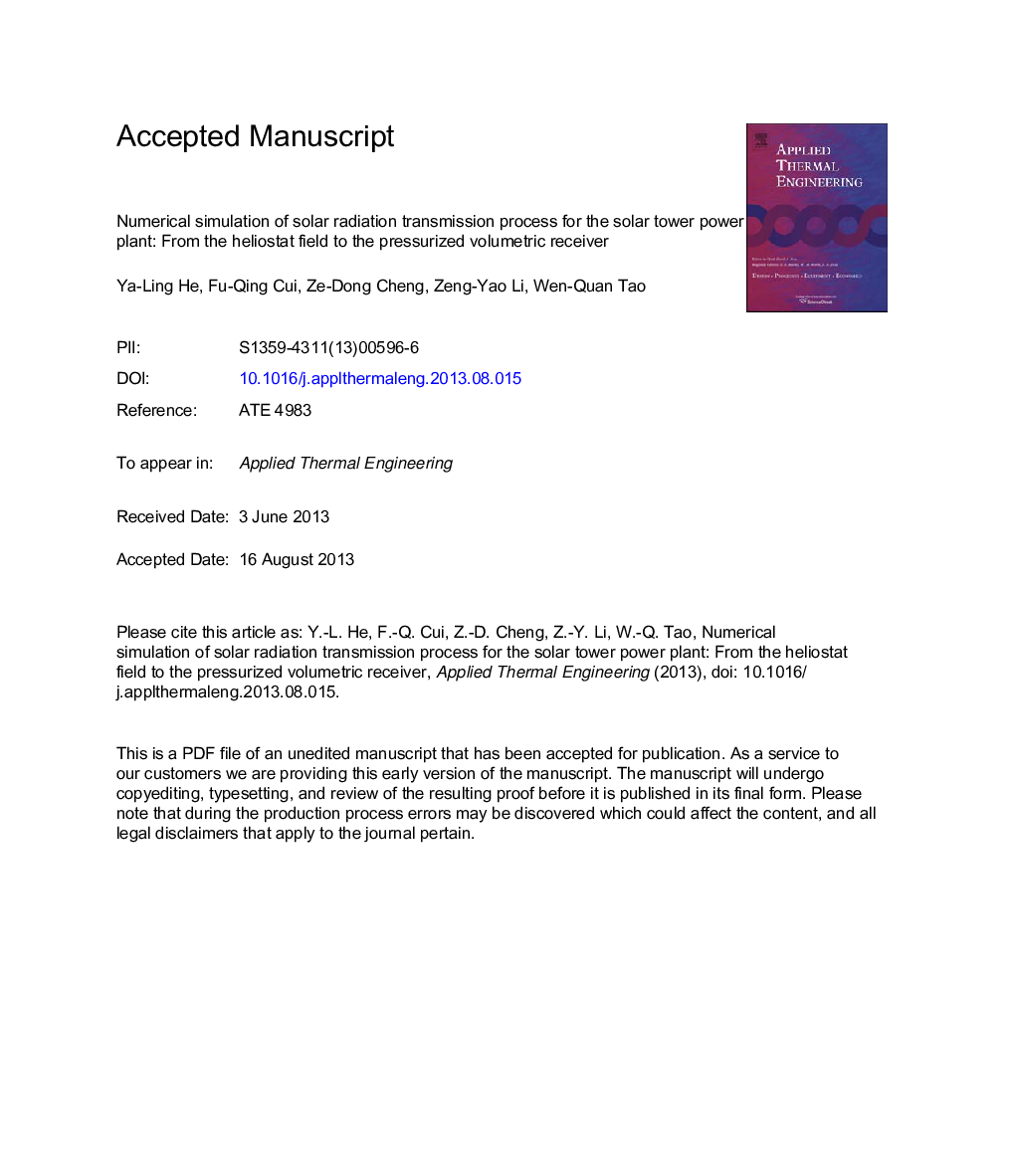| Article ID | Journal | Published Year | Pages | File Type |
|---|---|---|---|---|
| 646617 | Applied Thermal Engineering | 2013 | 45 Pages |
Abstract
In the present work, a concentrating and collecting subsystem optical model for the solar tower power plant is fully developed and the corresponding solar radiation transmission process from heliostat field to the pressurized volumetric receiver (PVR) is simulated by the in-house developed Monte Carlo Ray Tracing (MCRT) code. Based on the above model, the optical efficiency of heliostat field and the local heat flux distribution within the SiC absorber are calculated, and then the influences of time and date, receiver mounting height and heliostats tracking error on the radiation transmission and absorption process are also investigated. The computation results show that, the heat flux distribution within the SiC absorber exhibits a great non-uniform characteristic, while the maximum heat flux density at the top area of the absorber is up to 2.58Â ÃÂ 109Â W/m3. The variation tendencies of the field efficiency and the maximum heat flux density of the absorber are similar to that of the solar altitude angle during a day or a year. Furthermore, the annual mean field efficiency and the maximum heat flux of the absorber exhibit a rapid decreasing trend as the tracking error increases, but show a little increasing trend as the receiver mounting height increases.
Related Topics
Physical Sciences and Engineering
Chemical Engineering
Fluid Flow and Transfer Processes
Authors
Ya-Ling He, Fu-Qing Cui, Ze-Dong Cheng, Zeng-Yao Li, Wen-Quan Tao,
